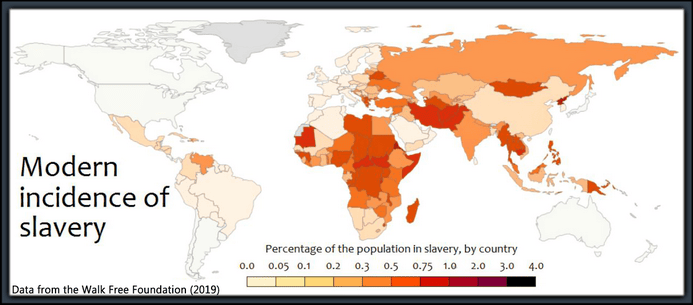Slavery didn’t start in 1492 when Columbus came to the New World. And it didn’t start in 1619 when the first slaves landed in Jamestown. It’s not a white phenomenon. The real story of slavery is long and complex. Candace Owens explains.
This map has probably changed — drastically — with Biden’s border policies. I mean drastically! I also wish to note that as a percentage, slavery has increased in the European countries due to the influx of “refugees” from countries dominated by Islam. (And the U.S. is driving sex-slavery in a myriad of ways.)
- Today, an estimated 529,000 to 869,000 black men, women and children are still slaves. They are bought, owned, sold, and traded by Arab and Muslim masters in five African countries. This statistic estimates those enslaved in Algeria, Libya, Mauritania, and Sudan. It excludes Nigeria, for which there are no tangible estimates. (ISRAEL NATIONAL NEWS)
- As the world marks 400 years since the first recorded African slaves arrived in North America, slavery remains a modern-day scourge. [….] Africa has the highest prevalence of slavery, with more than seven victims for every 1,000 people, according to a 2017 report by human rights group Walk Free Foundation and the International Labour Office. The report defines slavery as “situations of exploitation that a person cannot refuse or leave because of threats, violence, coercion, deception, and/or abuse of power.” Trafficking of sex workers, many of them tricked into thinking they will get employment doing something else, is one of the most widespread and abusive forms of modern-day slavery. (REUTERS)
